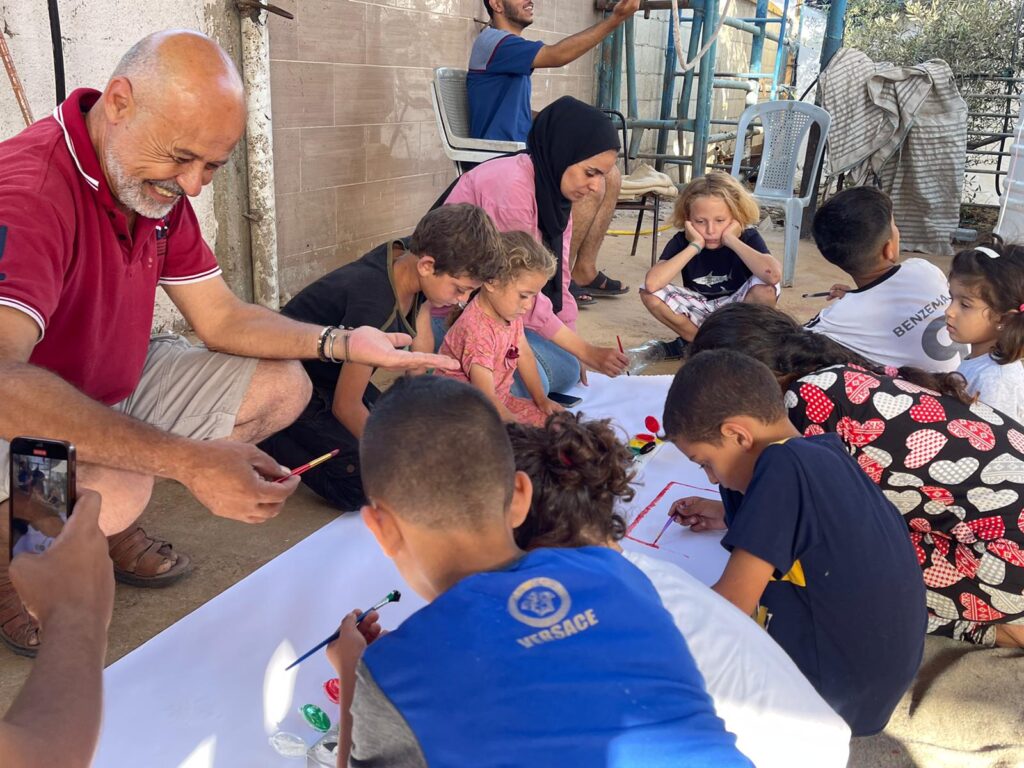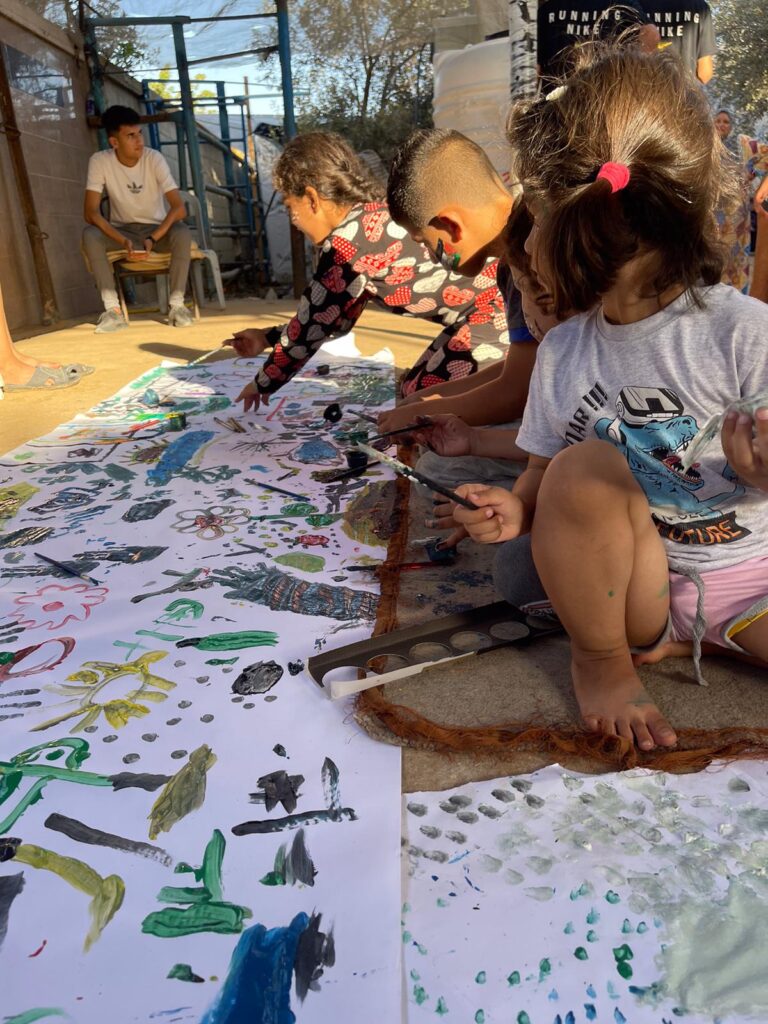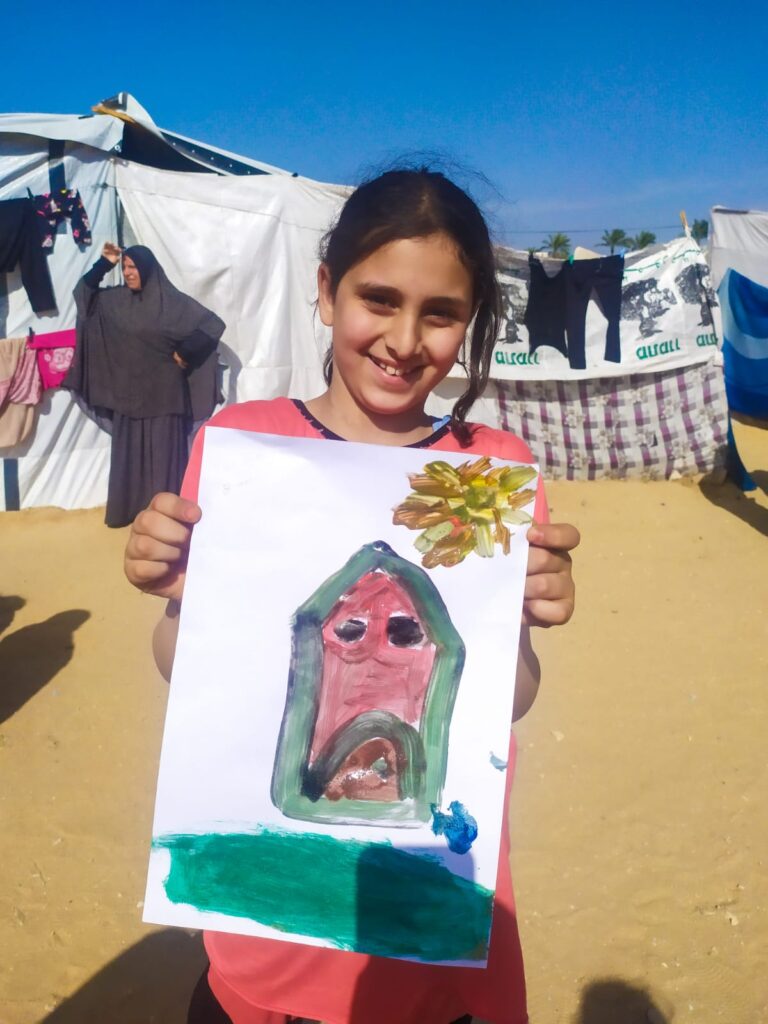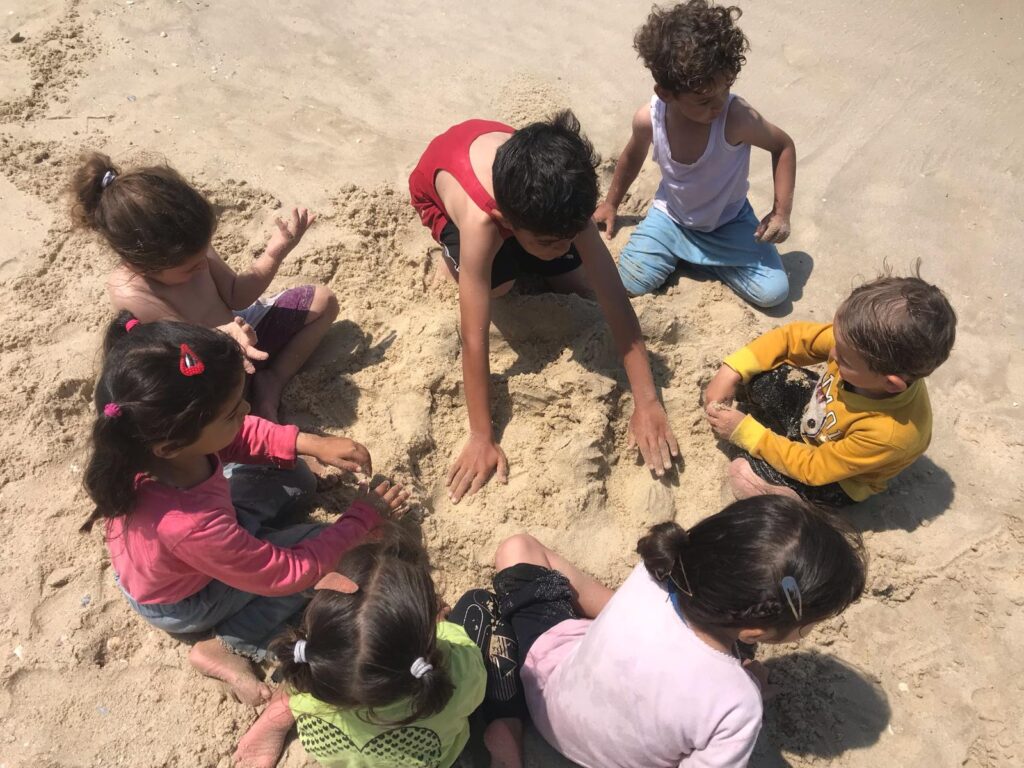The Israeli assault on Gaza is now in its tenth month. Amid catastrophic destruction, mass starvation, displacement, injury, death, and profound trauma, our partners leading activities for children in Gaza are a beacon of hope and resilience. Basel El Maqosui of Shababeek for Contemporary Art is one of these art activity leaders. In this piece he writes of his journey as an artist in wartime, and why he thinks art for trauma support workshops can help Gaza’s children.
“A person ages three times their years when they try to adapt to a life not suitable for them.”
“I draw to try to remain an aware and sensitive human, so that war does not erase my humanity.
“I left Gaza City for Khan Yunis and I stayed there with a friend for two months. Carrying my bag and my colours, I wandered in the streets of the city, the alleys of the camps among the tents, and among the rubble of our destroyed homes. I watched the children and photographed them in the streets, in the bakery queues, carrying water jugs, collecting paper, cardboard, and firewood so their mothers could cook food for them over the fire.
“This was not their life before October 7. They have become much older than their [actual] ages. These scenes used to provoke me and the artist inside me. I would gather them, play, laugh with them, work with them, and conduct art workshops. These I called ‘Art Residencies’. I held them in all the places I stayed in during this terrible war and genocide; Khan Yunis, Rafah, and now Deir al-Balah.

“They have the right to play, draw, learn, and health, like all children in the world.”
“I do not know where we will be after I write these lines. What makes me happy is watching children joyfully playing, their voices intermingling, expressing their innocent selves. They declare that we live our childhood with love and joy.
“I bought some drawing tools and would walk with my bag, gather the children, and ask them to draw freely. They were happy with that. We challenged the war, the sound of shelling, destruction, and genocide.
“A whole generation of children is facing the worst kinds of death, in a moment they turn into scattered pieces in a place. Their bodies cannot withstand a missile whose force explodes concrete, cement, and iron… This is our entire message: we are not living just to carry their limbs and bury them under the ground.
“My sons and grandsons are among these deprived children who are entitled to play, education, health, and travel. Yet, they sleep not knowing if they will wake up to the sound of shelling, bombs, or destruction surrounding them everywhere. They have even lost safety. We all failed to protect them, but we can make them happy, make them smile.
“It was one of the hardest workshops of my life”
“Some friends from outside Gaza—from Hope and Play—contacted me, they helped me buy materials. I bought some colours and paper and conducted workshops with children in schools (shelters). Their mothers loved the idea after noticing a change in their children’s behaviour. They asked me to conduct workshops for their children.
“It was one of the hardest workshops in my life; they drew their dreams, cried, and I cried with them. But we faced the challenge of war and bombings and we drew with all our love our homes that were destroyed by planes and tanks. We drew flowers, the Palestinian flag, and our dreams. The children were happy with that, and I made my tent a place not for displacement but for my artistic residence.




“Art helps children express their feelings”
“Arts are always a means for people to communicate without language. But now it is a tool to remember life and resist the daily reality of fear for everyone in Gaza. Through drawing workshops, I try to help children alleviate this fear and horror that surrounds them every second of the day.
“Art helps to develop creativity and innovation in children. It teaches them how to deal with the world around them, and how to interpret and explain what they think in a creative and innovative way. Practicing certain types of arts helps children express their feelings using words or even through movements or gestures and to think positively.
“We rebuilt them again and again”
“We did not stop at drawing; in one of the workshops, I went to an area in Rafah by the sea and gathered a group of children, we built houses with love, and the waves washed them away, and we rebuilt them again and again. The workshops were repeated between Rafah and Deir al-Balah. Then we ran 10 workshops, two football workshops, games on the beach, and mural painting.

The challenges
“I faced problems, especially regarding the prices of tools, materials, and paints. Every time, their prices increased. Since I used to leave what remained of coloured paint and tools for the children in every workshop, I had to buy new ones each time.
“Hope and Play used to send the money through a bank account, but unfortunately, we had to withdraw the money through money traders in the black market due to the banks being closed, and this was at different rates of commission, sometimes up to 20% of the total amount.
“Hope and Play sent me $3,000 in three installments for a six-month contract. Thank you, Hope & Play Charity.”